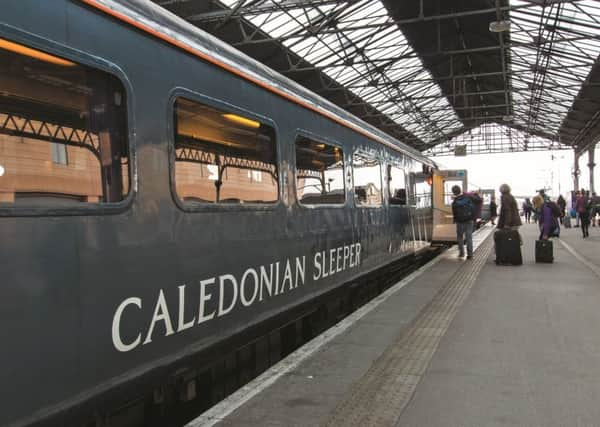Book review: Anglo-Scottish Sleepers, by David Meara


But Meara’s book also highlights the comparative luxury of the present service against the past, where four-berth cabins with only scant bedding of questionable cleanliness was on offer.
Even that was better than the weird Victorian contraptions available before the first sleeping carriage was built in 1873, such as “Peake’s Portable Sleeping Rest” – effectively a fold-out stretcher balanced between facing seats.
Advertisement
Hide AdOnce established, Sleeper services sought to entice those not instinctively persuaded of their romance with vivid advertising posters, which, among many other evocative illustrations, are the chief delight of this book.
They include one for the Night Scotsman service in 1932, with the entire scene of train, railway and background hills in moonlit azure save for the yellow and orange of the blazing firebox.
Latterly, British Rail depicted its Sleeper trains as swirling through the clouds, while another BR advert extolled the benefits of being able to “Travel in your pyjamas” with pictures of a “nightcap” G&T, cheery guard with tea tray – and man using a shaver socket.
Meara also includes forgotten historical details, such as the fact that far from being earmarked for the axe in the 1963 Beeching Report, it judged the Sleepers to attract a “satisfactory level of traffic, and there is good reason to suppose they can be improved and increased”.
While a slimmed-down Sleeper network has survived – it once stretched to Stranraer, Holyhead and Paris – less fortunate was the accompanying Motorail service, in which your car came with you. A chapter includes some great 1960s photographs of cars being driven on and off wagons. Other illustrations show that not only was car carrying offered in the 1930s, (normally horse-drawn) carriages were being conveyed by rail a century before. Despite its convenience and early success, the growth of air travel and improvements to roads and vehicle reliability saw Motorail close in the 1990s.
The Sleeper appears to have a rosier future, so for past passengers wanting to reminisce, budding travellers curious about what’s ahead, or those lying awake in their bunks, Meara’s 96-page volume hits the spot.
Anglo-Scottish Sleepers, by David Meara, Amberley, £14.99